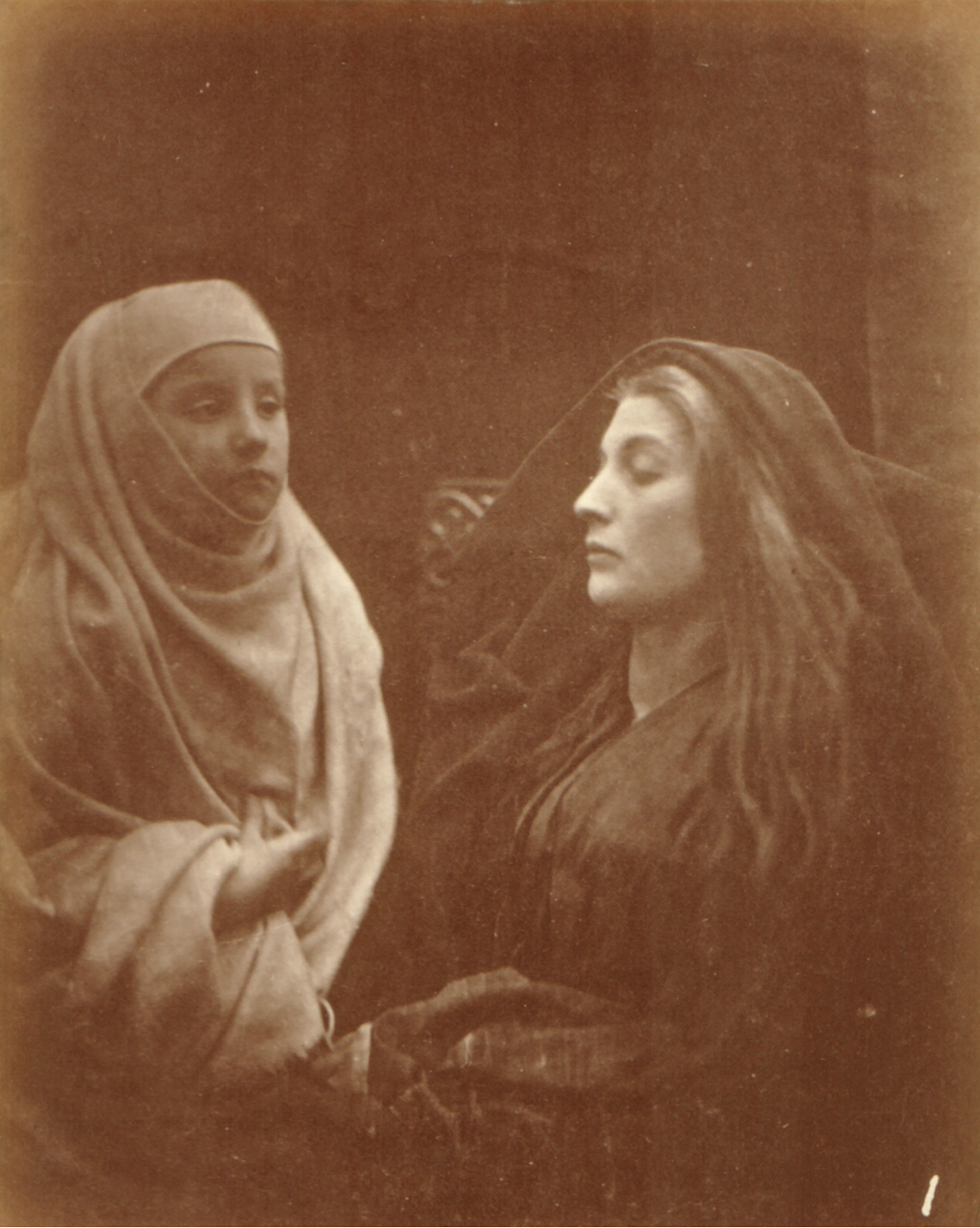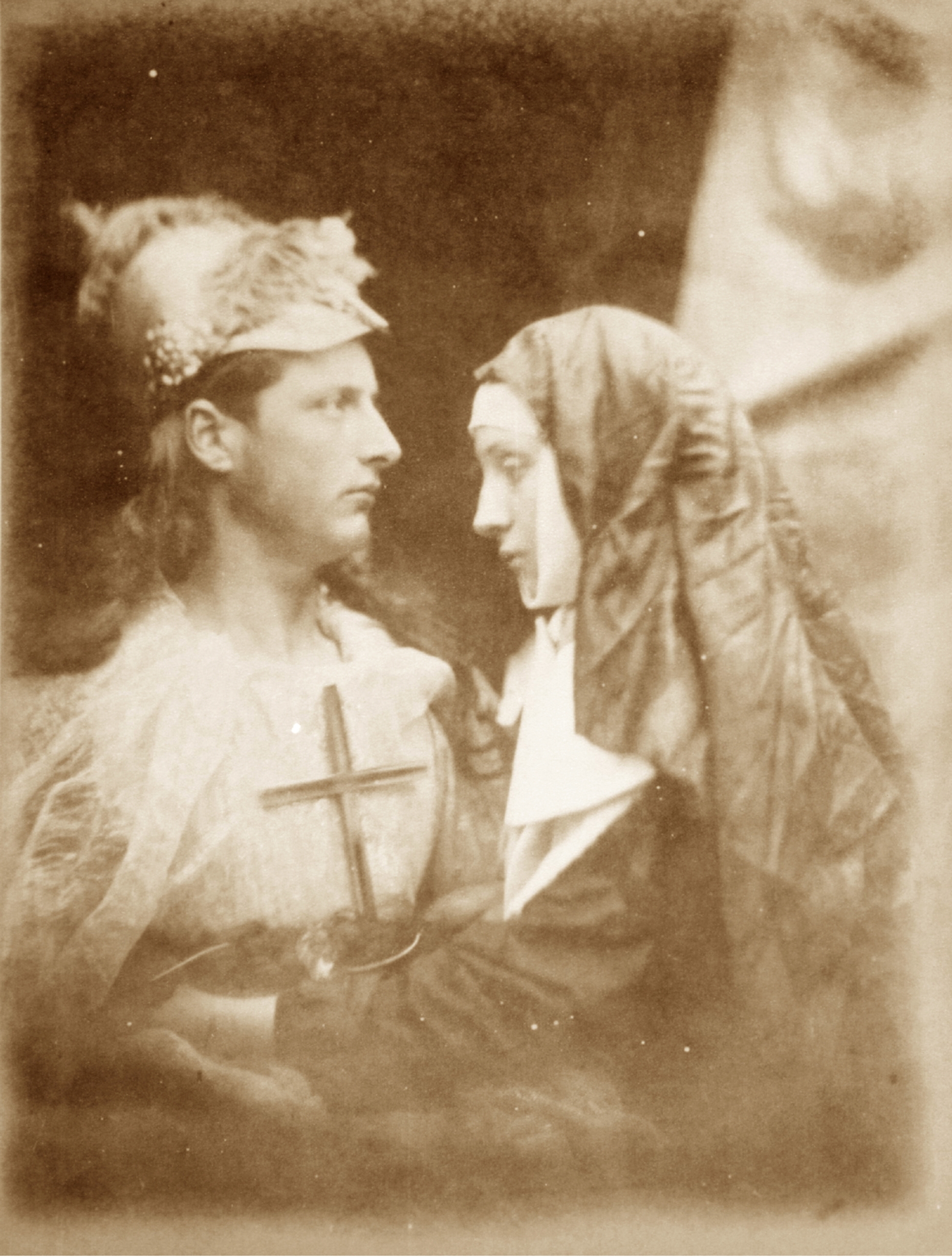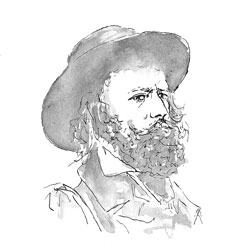Music and Meaning in Tennyson’s ‘In Memoriam’ (4): ‘Aeonian Music’
Friday, May 8th, 2009In her book On Form Angela Leighton has described Tennyson's as one of the nineteenth century's 'most memorable, sensuous, aesthetic voices'. According to Leighton, it is Tennyson 'who pushes language almost as far as it will go into music, whose rhymes and echoes ring on the other side of sense... this musical compulsion is not a search for metaphysical self-validation, but a feeling for form as a thing to be held as literally as possible against the threat of formlessness'. Considering how Leighton's perspective (in which Tennyson's music does not respond to metaphysical questions but simply celebrates 'form') might relate to or differ from Griffiths' or Tucker's, take a look at this single stanza from lyric 114 of In Memoriam and consider what it might be suggesting about the idea of 'form':
Who loves not Knowledge? Who shall rail
Against her beauty? May she mix
With men and prosper! Who shall fix
Her pillars? Let her work prevail.
Encouraging readers to think about 'the attitude towards form expressed in the poem itself', the literary critic J.C.C. Mays highlights passages like the one above and claims that 'Tennyson's attitude towards form in general applies to poetic form in particular'. What do you think 'the attitude towards form' expressed in lyric 114 might be and how do you think this attitude might apply to 'poetic form in particular'? Interestingly, this stanza both asks 'who shall fix... [Knowledge's] pillars' and refuses to 'fix' sturdy structural pillars of its own: at the end of each of its first three lines, Tennyson employs a poetic device called enjambment, which means that its sentences do not end where its lines end, but rapidly flow on to the following line (in 'Who shall rail / Against her beauty?' for example). By making use of enjambment in this way, as he expresses this claim about the beauty of knowledge, what do you think Tennyson might be suggesting about the relationship between faith and form?
Throughout this very hopeful stanza in lyric 114 (a stanza in which the speaker expresses some hope that 'Knowledge... may... mix / With men and prosper') the poem's form is not restrictively fixed; formal constraints, such as the need for units of sense to be completed by the end of each line, do not obstruct this faithful outburst. At the same time, however, that physical intelligence which structures the poem in this way (using enjambment so as to formally reflect the speaker's faithfulness) does seem to possess that positive 'feeling for form' to which Angela Leighton refers: this stanza does not have a fixed form, but it does have a fitting form, a structure that suits or a music that matches its meaning. The unfixed form of the stanza we've considered in lyric 114 celebrates the developing spiritual strength of the poet. What do you think Tennyson's attitude, then, towards poetic 'form' and its relation to spiritual 'faith' might be?
To help us think about this problem, let's consider another lyric from In Memoriam, within which Tennyson contrasts his own formless kind of faith with his sister's more orthodox Christianity: 'O thou', the poet addresses himself:
that after toil and storm
Mayst seem to have reach'd a purer air,
Whose faith has centre everywhere,
Nor cares to fix itself to form,
Leave thou thy sister when she prays,
Her early Heaven, her happy views;
Nor thou with shadow'd hint confuse
A life that leads melodious days.'
In these stanzas from lyric 33 of In Memoriam, Tennyson seems to be suggesting that some people find fixed forms to be necessary in enabling them to lead 'melodious days'. It appears that beautiful forms must first be sustained if individuals are ever to be able to find faith (and keep hold of it) at all. If certain forms are to be maintained purely because they enable people to live 'melodious days', it would appear to be the case that Tennyson values music more than meaning; even as some individuals (including the poet, for example) neither find themselves able to overcome their urge to ponder metaphysical questions, nor believe it to be necessary to commit themselves to traditional forms of faith, the ultimate goal for everyone appears to be to attain some kind of harmonious formal composure. The speaker neither has the ability to live 'melodious days' that his sister has, nor believes himself able to attain equilibrium by the same formal means (the same simple Christian faith) as has enabled her to attain that ability. At the same time, however, the speaker does not think it would be right to 'confuse' his sister's harmonious state by voicing his own doubts to her, and sets about (especially in lyric 114, as we saw above) attempting to acquire an equivalent state of harmony by fittingly developing new forms (both of faith and poetry) of his own.
According to J.C.C. Mays, 'one of the themes' of In Memoriam 'is a winning through to confidence in form, to an ability to sustain it by faith'. Moreover, 'Tennyson's gradual winning of confidence in form and all else is presented dramatically, as it happens, and not as an imposed conclusion'. Let's take a look at lyric 87 of In Memoriam and begin to think about how it might be presenting 'Tennyson's gradual winning of confidence in form... dramatically'. In this lyric, Tennyson is describing having listened to Arthur Hallam's voice when they were both Cambridge students, a few years before Arthur died. As you read it, think about what the lyric might be suggesting about the speaking voice, about music, and about the process of developing faith in 'form':
A willing ear
We lent him. Who, but hung to hear
The rapt oration flowing free
From point to point, with power and grace
And music in the bounds of law,
To those conclusions when we saw
The God within him light his face,
And seem to lift the form, and glow
In azure orbits heavenly-wise.'
Here Tennyson seems to be bringing together a lot of the ideas that we've been considering throughout these In Memoriam web-pages: the speaker gives 'a willing ear' to another's speaking voice; Tennyson again uses enjambment as a means of dramatising a flux of faith, as the voice of Hallam is said to be 'flowing free / From point to point, with power and grace/ And music'; just as it was measured language that, in lyric 95, enabled Tennyson to bridge the gap between the land of the living and that of the dead, so here it is the spoken word which enables 'the God within' Hallam to 'light his [mortal] face'. Keeping in mind what the poem appears to be suggesting about both music and artistic form's relation to faith, let's now compare what Tennyson suggests about the development of 'music in the bounds of law' in the lyric above, with what he suggests about measured (and measuring) 'Aeonian music' in the ninety-fifth lyric (which we looked at on the second of the In Memoriam web-pages):
So word by word, and line by line,
The dead man touch'd me from the past,
And all at once it seem'd at last
The living soul was flash'd on mine,
And mine in this was wound, and whirl'd
About heights of thought,
And came on that which is, and caught
The deep pulsations of the world,
Aeonian music measuring out
The steps of Time - the shocks of Chance -
The blows of Death. At length my trance
Was cancell'd, stricken thro' with doubt.
Vague words! but ah, how hard to frame
In matter-moulded forms of speech,
Or ev'n for intellect to reach
Thro' memory that which I became.'
'Form' - according to J.C.C. Mays - 'seems a necessary evil: faith can express itself only through form, and yet form circumscribes and distorts the expression of faith'. Do you agree? As was observed at the beginning of this study of In Memoriam, Tennyson suggests that his words are 'vague' and claims that it is 'hard to frame' authentic expressions of faith in 'forms of speech' that are 'matter-moulded'. Conversely however, lyrics 87 and 95 have both suggested that it is only 'word by word', 'line by line' and 'from point to point, with power and grace' that language (and language only) can enable individuals to develop and experience faith in the first place. Just as it is only Hallam's (measured) speaking voice that creates 'music in the bounds of law' in lyric 87, so it is only Hallam's own 'matter-moulded words' that enable Tennyson - at last - to catch the sound of 'Aeonian music measuring out / The steps of Time' in lyric 95.
In Memoriam does appear to be suggesting that Time's steps really are measured out by 'Aeonian music', and that this in turn is keeping human life within 'the bounds of law', just as its own iambics are being measured out by the poem's fitting form. However, this lyric is representative of In Memoriam as a whole in that it dramatizes the general difficulty, as well as the transitory possibility, of acquiring faith through confidence in form. 'Tennyson's whole meaning', we may want to conclude with J.C.C. Mays, 'is that faith is not a constant'.
Further Thinking
These In Memoriam web-pages have provided introductions to aspects of this famous and important poem, and to the exploration of music's relation to meaning in Tennyson. On this website you'll find a number of resources devoted to the contexts in which it was written. To find out how these thoughts on In Memoriam relate to 'Music and Meaning' in Tennyson more generally you could head for the unabridged 'Music and Meaning' web-pages.


